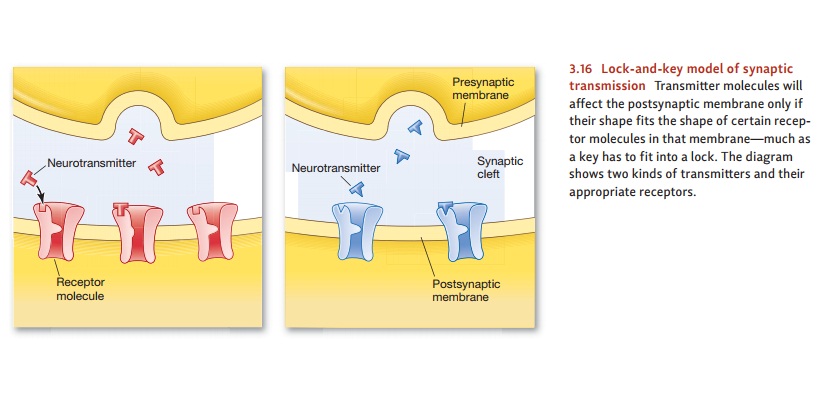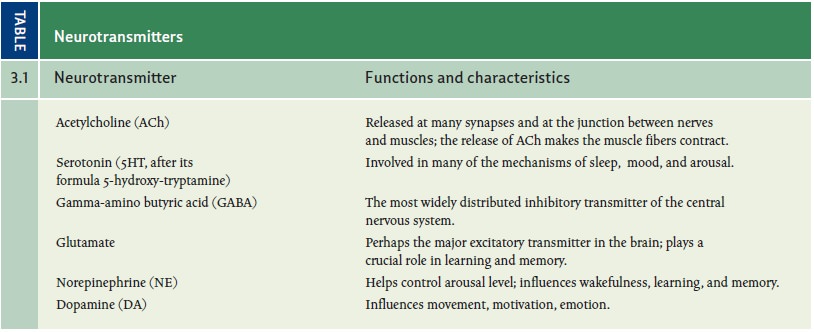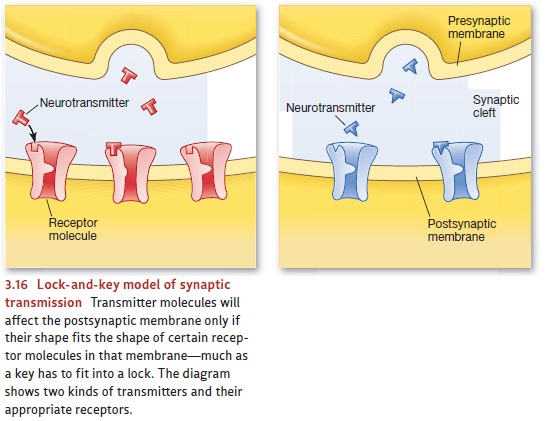Chapter: Psychology: The Brain and the Nervous System
Neurotransmitters

Neurotransmitters
On the face of it, the nervous
system might seem to need only two transmitters: an excita-tory one that makes
the postsynaptic cell more likely to fire and an inhibitory one that makes the
cell less likely to fire. But the reality is different; there are actually a
great number of transmitter substances. About a hundred have been isolated so
far, and many more are sure to be discovered. (A few of these neurotransmitters
are listed in Table 3.1.)
Why does the nervous system need
so many signal types? For one thing, the variety helps the nervous system to
keep separate the different types of information being passed back and forth.
The key idea here is that individual neurons are selective in what neurotransmitters
they will respond to. Many neurons are responsive to more than one transmitter;
but even so, each neuron has its own pattern of sensitivities. For example, a
neuron inhibited by GABA will respond differently—or perhaps not at all—to
mole-cules of serotonin that happen to float by. Thus, in each part of the
brain, the nervous system can use one transmitter to send one type of message
and a different transmitter to send a different type of message.


How do neurons manage to be
selective in this way? The answer, which depends on the exact shape of the
receptors on the postsynaptic neuron, is sometimes described in terms of the lock-and-key model of transmitter
action. This theory proposes that trans-mitter molecules will affect the
postsynaptic membrane only if the molecule’s shape fits precisely into the
receptor, much as a key will work only if it has exactly the right shape for
that lock (Figure 3.16).
Let’s be clear, though, that the
lock-and-key model provides a highly simplified account of the dynamics linking
transmitters to receptors. Thus, our ultimate theory will need to include a
number of significant complications (e.g., Bullock et al., 2005). Even so, the
notion of receptors being selective in their response, and the idea of
different neurotransmitters providing different signals, are key elements in
controlling the complex flow of information throughout the brain.
Related Topics